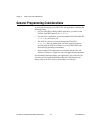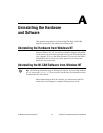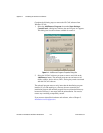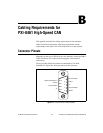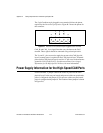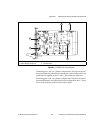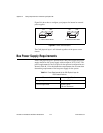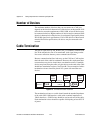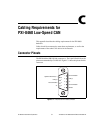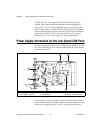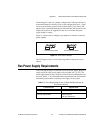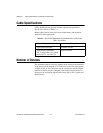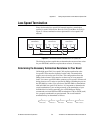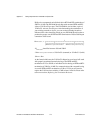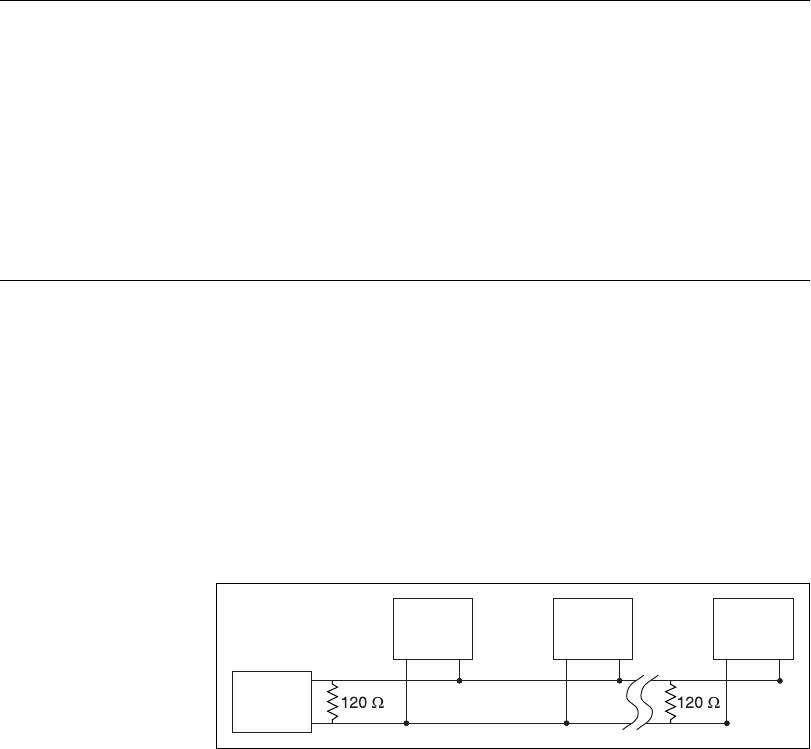
Appendix B Cabling Requirements for PXI-8461 High-Speed CAN
PXI-8461 or PXI-8460 and NI-CAN for Windows NT B-6 www.natinst.com
Number of Devices
The maximum number of devices that you can connect to a CAN port
depends on the electrical characteristics of the devices on the network. If all
of the devices meet the requirements of ISO 11898, at least 30 devices may
be connected to the bus. Higher numbers of devices may be connected if the
electrical characteristics of the devices do not degrade signal quality below
ISO 11898 signal level specifications. If all of the devices on the network
meet the DeviceNet specifications, 64 devices may be connected to the
network.
Cable Termination
The pair of signal wires (CAN_H and CAN_L) constitutes a transmission
line. If the transmission line is not terminated, each signal change on the
line causes reflections that may cause communication failures.
Because communication flows both ways on the CAN bus, CAN requires
that both ends of the cable be terminated. However, this requirement does
not mean that every device should have a termination resistor. If multiple
devices are placed along the cable, only the devices on the ends of the cable
should have termination resistors. See Figure B-5 for an example of where
termination resistors should be placed in a system with more than two
devices.
Figure B-5.
Termination Resistor Placement
The termination resistors on a cable should match the nominal impedance
of the cable. ISO 11898 requires a cable with a nominal impedance of
120 Ω; therefore, a 120
Ω resistor should be used at each end of the cable.
Each termination resistor should be capable of dissipating at least 0.25 W
of power.
CAN
Device
CAN
Device
CAN
Device
CAN
Device
CAN_L
CAN_H



